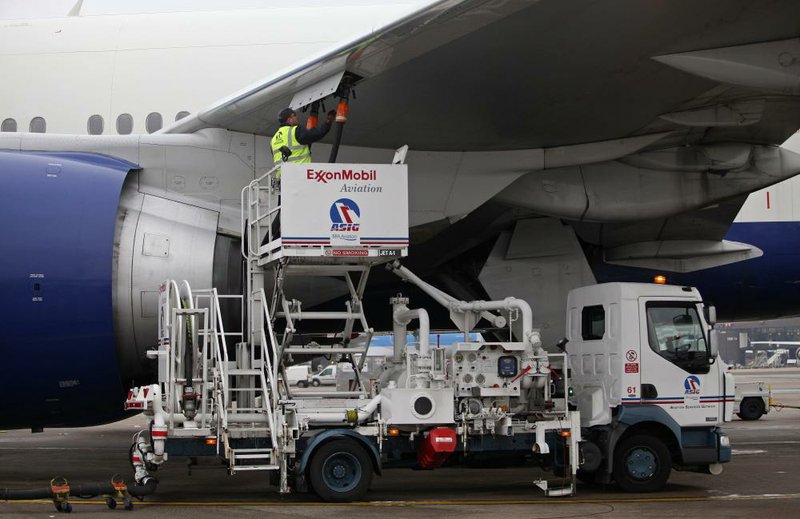Exxon Mobil Corp., the world’s largest company by market value, on Thursday posted an unexpected profit increase that exceeded analysts’ estimates as widening chemical margins made up for lower crude-oil production and prices.
First-quarter profit was $9.5 billion, or $2.12 a share, compared with $9.45 billion, or $2 a year earlier, the Irving, Texas-based company said in statement. The per-share result was 7 cents higher than the average of 19 analysts’ estimates compiled by Bloomberg.
Chemical profit jumped 62 percent to $1.14 billion as the gap between production costs and selling prices expanded, according to the statement. Exxon’s chemical plants contributed 12 percent of total profit while absorbing just 2.6 percent of the company’s $11.8 billion in capital spending during the quarter.
“Exxon’s chemical segment is the best-run in the energy sector,” said Brian Youngberg, an analyst at Edward Jones & Co. in St. Louis. “They see themselves as the true integrated oil company and rightly so.”
Exxon bucked the trend toward falling profit among energy producers beset by slipping crude-oil prices. Occidental Petroleum Corp., the largest oil producer in the continental U.S., and ConocoPhillips reported profit declines of 13 percent and 27 percent, respectively, on Thursday.
Exxon’s sales fell 12 percent to $108.8 billion. Shares fell $1.36, or 1.5 percent, to close Thursday at $88.07.
Oil and gas output from the company’s wells declined 3.5 percent to the equivalent of 4.4 million barrels a day, according to the statement. A barrel of oil contains 42 gallons. Profit from oil and gas sales dropped 9.8 percent to $7.04 billion. Refining profit declined by 2.6 percent to $1.55 billion.
Chairman and Chief Executive Officer Rex Tillerson has been acquiring North American gas and oil fields and expanding exploration in Russia, Africa and the Gulf of Mexico to stem production declines that the company has said will extend through the end of this year.
Exxon’s global output will fall 1 percent this year after dropping by 5.9 percent in 2012, the company said in a March 6 slide presentation to analysts.
Exxon hasn’t turned new discoveries into producing fields quickly enough to replace shrinking output from assets that have been pumping oil and gas for decades.
The company’s Kearl oilsands development in Canada that is expected to produce 3.2 billion barrels over the next three decades has been beset by equipment-transport and weather delays.
The project was expected to produce its first batch of pipeline-ready crude “within days,” Pius Rolheiser, a spokesman for Exxon’s Imperial Oil Ltd. unit, said on April 23.
Exxon underperformed its biggest U.S. rival, Chevron Corp., and the broader market during the first quarter, advancing 4.1 percent. During that period, Chevron increased 9.9 percent and the Standard & Poor’s 500 index rose 10 percent. Chevron, based in San Ramon, Calif., is scheduled to disclose first quarter results today.
Crude-oil demand declined or stagnated during the first three months of the year in Europe’s largest economies as well as Japan and South Korea, the Paris-based International Energy Agency said in a March 13 report. Brent crude futures, the benchmark for two-thirds of the world’s oil, averaged $112.61 a barrel during the quarter, down 4.9 percent from $118.45 a year earlier.
Exxon relies on oil and gas sales outside the U.S. for 71 percent of its operating earnings, more than any major U.S. oil producer aside from Marathon Oil Corp., Paul Cheng, an analyst at Barclays, said in an April 8 note to clients. Houston-based Marathon counts on foreign oil and gas sales for 77 percent of its operating earnings, according to Cheng.
The effect of lower crude prices was partly blunted by higher natural-gas prices in the U.S., where Exxon is the biggest producer of the furnace and power-plant fuel.
Business, Pages 25 on 04/26/2013

